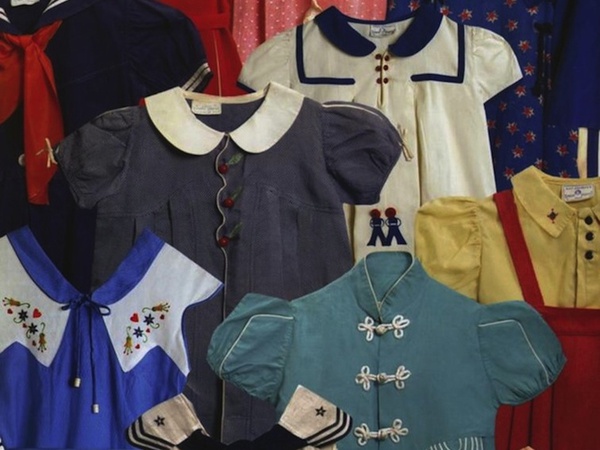
Shirley Temple's Cinderella Frock series
As American's most famous child star and affectionately known as "Miss Miracle" by the former U.S. President Franklin D. Roosevelt, Shirley Temple is recognized as the "public lovers" world widely.
In the minds of fans worldwide, Shirley Temple is will always the synonymous of "cute", the eternal charmingly naive and curly-haired sweetie with a deep dimple in black-and-white films.
Shirley Temple entered the dance school at 3 and starred her first musical film at 6 years old. Her representative works includes Curly Top, The Littlest Rebel, etc. helping the U.S. cope with the Great Depression of the 1930s. At that time, people flocked to the theaters just hoping for a chance to meet her.
In the late 1930s, Shirley Temple was already a household name in the United States, all the parents in the country were dressing up their kids right after her. In any ways, Shirley Temple was actually the iconic figure among children.
It is estimated that Shirley Temple had accumulated wealth of up to 3 to 4 million dollars since she bid farewell to films at the age of 21, which is supposed to be quite a large for fortune in U.S. economy after the Great Depression. There're two main sources of her income; one is films paycheck, the other is from the name and image usufruct contract.
Since the first burst of this pop child star, Shirley Temple opened her own brand - "Shirley Temple" and developed various series like clothing, gloves, swimwear, etc. Among all the products, it's the "Shirley Temple Cinderella Frock" series with cooperation of Rosenau Brothers from Philadelphia earned the highest popularity.
It took name from Cinderella in Disney's famous fairy tale with the same name while the design was entirely based on Shirley's style in her new film. It won great success as people were totally hooked by "wearing the same clothes as Shirley Temple".
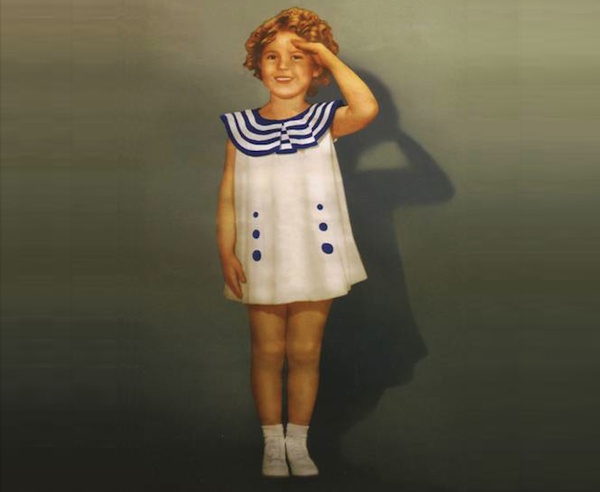
Cinderella Frock's new product on the basis of Shirley Temple in "The Little Colonel"
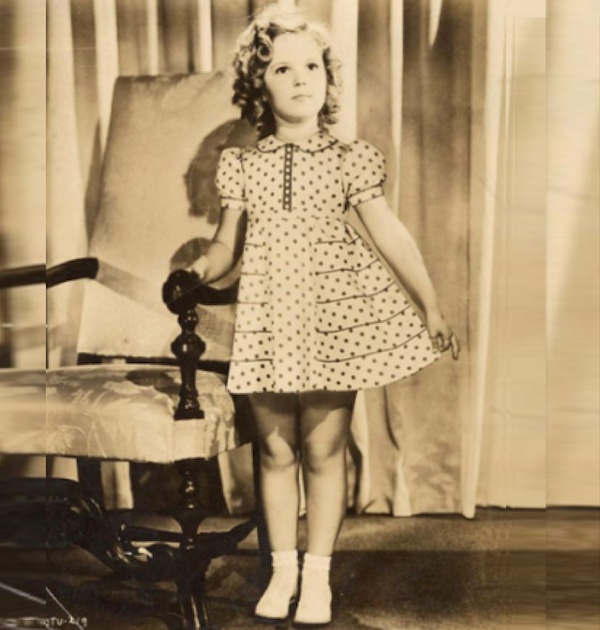
Cinderella Frock's new styles on the basis of Shirley Temple in "Dimples"
Shirley Temple Cinderella Frock series bases in doll dress with high waist and pudgy figure; the outward short skirts reveals little girl's fleshy thighs. In consideration of viewer’s acceptance, this model covered all Shirley’s early styles. So that she still dressed up like a 3-year-old toddler at the age of 10.
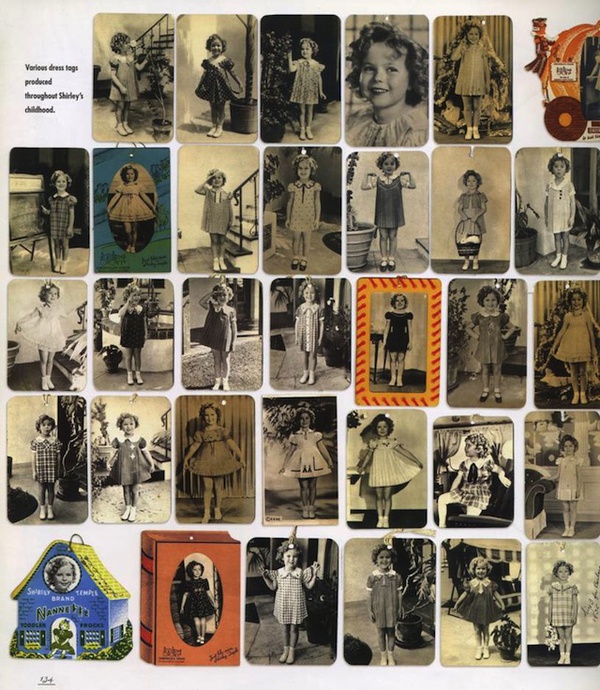
Cinderella Frock's Shirley Temple early image atlas
Until the late 1930s , Cinderella Frock responded normal girl's demand and introduced the "Big and Little Sister" series with waist down and long skirts - Of course, its spokesperson was still Shirley Temple.
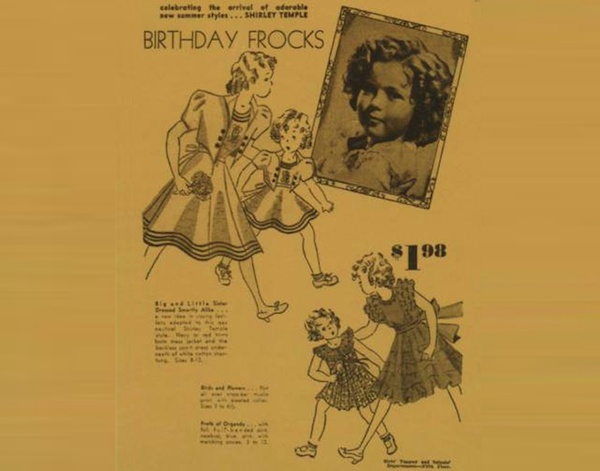
“Big and Little Sister” series ads
The truth is Shirley Temple had such a far-reaching impact on the child fashion all over the U.S. so that Daniel Cook wrote in "The Commodification of Childhood: The Children’s Clothing Industry and the Rise of the Child Consumer" like this: In the past people may have not seen the children as independent individuals with sex, their needs are often given on preference of their mother; but with Shirley Temple's film and advertising, the market trends varies since 1930. More and more people realized that, even the young child is an individual, his/her personality should not be concealed under the stereotyped clothes. Today, with the fuel of Disney and Hollywood's child stars, children's wear industry has been one of the most important sources among global garment industry.
Shirley Temple's fashion evolutionary history:
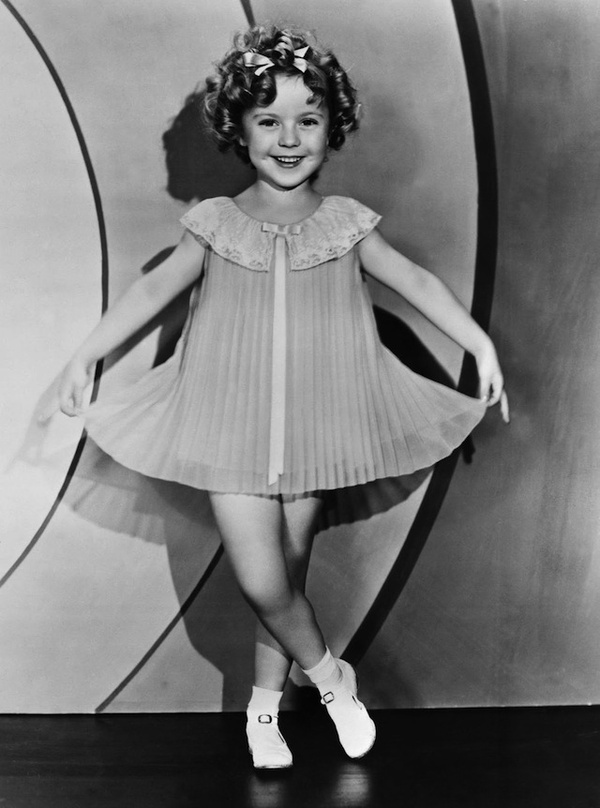
Shirley Temple in movie "Stand Up and Cheer!", 1934

Shirley Temple in movie "Captain January", 1936
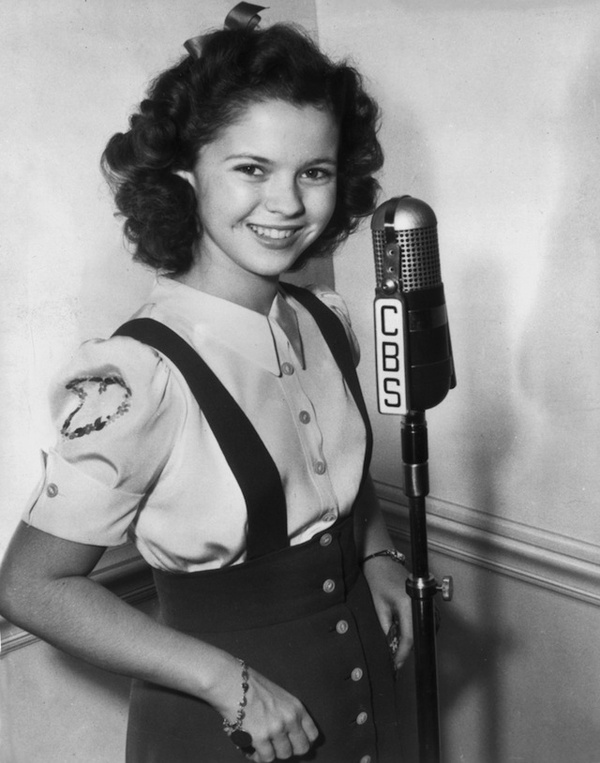
Shirley Temple in 1942
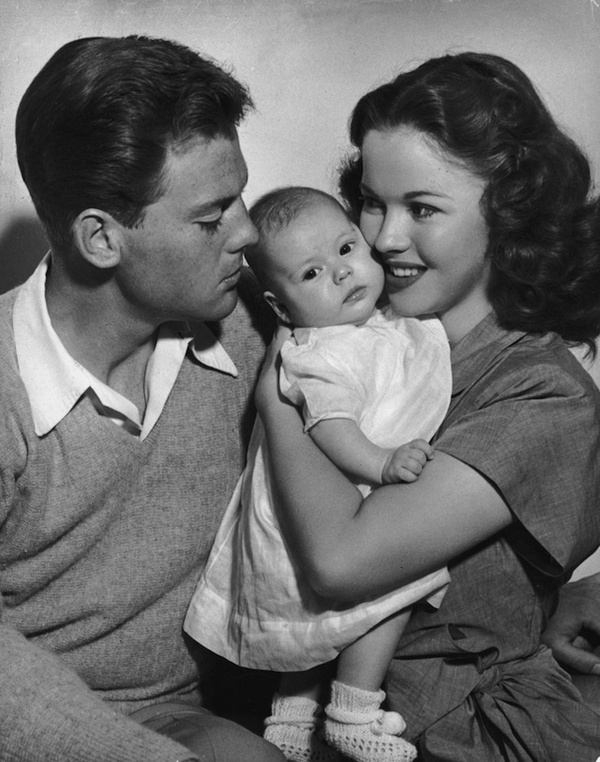
Shirley Temple attends the premiere of "Roman Holiday" with her second husband Charles Black; 1953
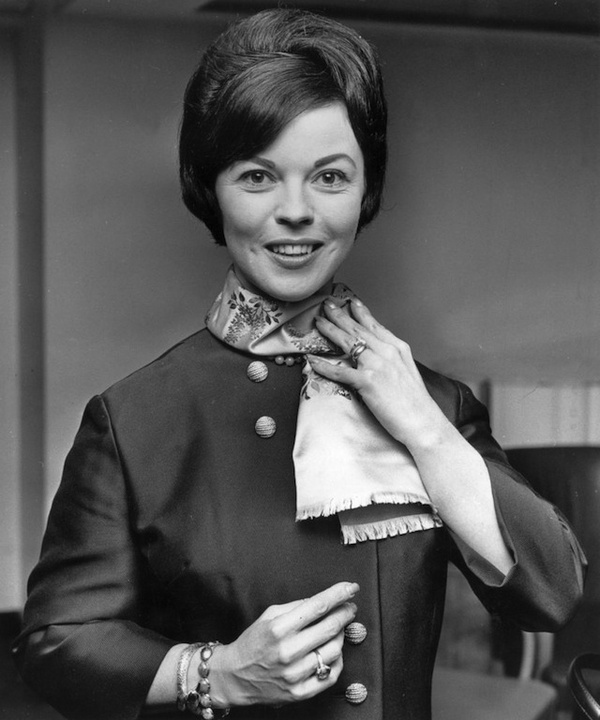
Shirley Temple in London, 1965

Shirley Temple signing on her autobiography "Child Star", 1988
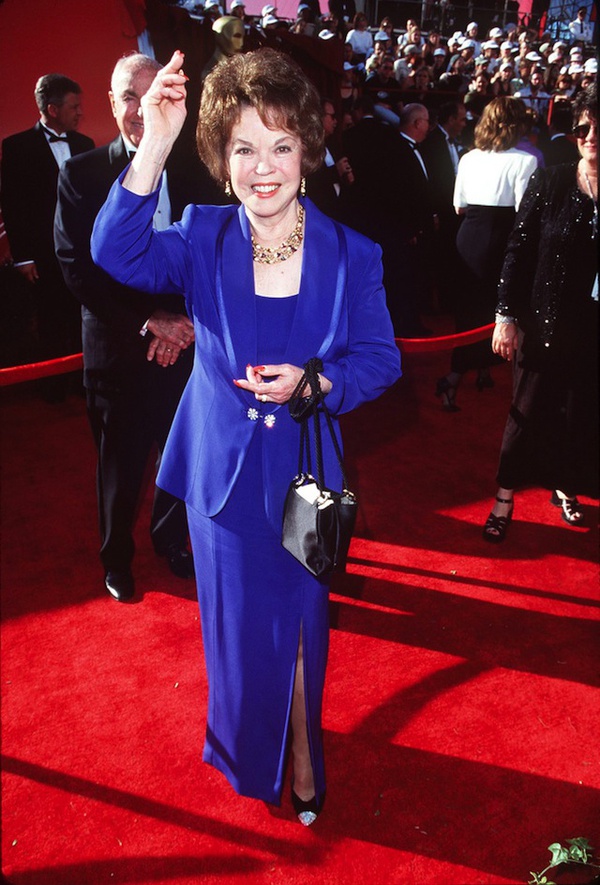
Shirley Temple on the red carpet in 1998

Shirley Temple accepted a lifetime achievement award at Screen Actors Guild Awards, 2006.


 Home
Home




